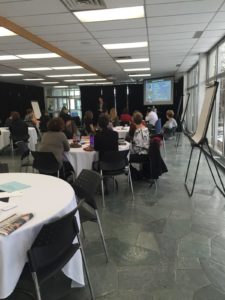Making the Plan
We developed a comprehensive engagement and consultation plan to explain how previous decisions to date were made and define the areas of input where staff could still have their say. After the plan was made, we shared the schedule of future connection points for updates with everyone involved.
Key to the coordination of these activities was a cross-disciplinary operational readiness team that included representation from staff moving to the building, change management, space planning, communications, project management and the construction project. We met weekly to check in, to plan the upcoming activities, and to generally share the word on the street. This team was AMAZING and was the secret sauce in this project.
PRO-TIP: The team had one rule: bring questions and results to the table. The result: meetings were efficient and celebrated success.
To make the move
Staff and students were asked for their feedback early in the project, and were involved in a ton of varied projects. They included activities like:

- a “chair fair”, where new classroom and lab furniture was brought in and set up outside of the bookstore, so staff and students could test out furniture options before they were selected. This input became part of the procurement process later.
- Workstation and office personalization. Every staff moving into the building visited a mock up of the new furniture and were given a budget to spend on their new chair, furniture and accessories from a menu
- Working groups. Each unit moving into the building formed their own working group where questions specific to their team were brought forward, resolved, and communicated back to their unit. The working groups became the ears and mouths of users. They brought forward concerns from their peers and often solved problems before they reached the bigger operational teams.
- “bums in seats” Each unit determined how they were going to lay out their neighbourhoods, and then each program decided how they were going to assign desks to each team member.
- Move-in Fair As moving day approached, a day-long event was organized to answer any questions about the new building. Representatives from across the university were gathered to do classroom technology demonstrations, problem-solve Bring Your Own Device questions, mail pick up, on-demand printing and generally ask questions that were still unresolved.
Information + Time = Smooth sailing
The operational readiness team used town halls, interactive FAQs, a dedicated website and surveys to check in on how people were feeling about the change and to change the course of the readiness projects. After move-in and the grand opening events, the operational team had a plan for dealing with moving hiccups and unexpected changes. Many of these events ended up being cut short or cancelled all-together, owing to the success of the year-long change process before the move.
